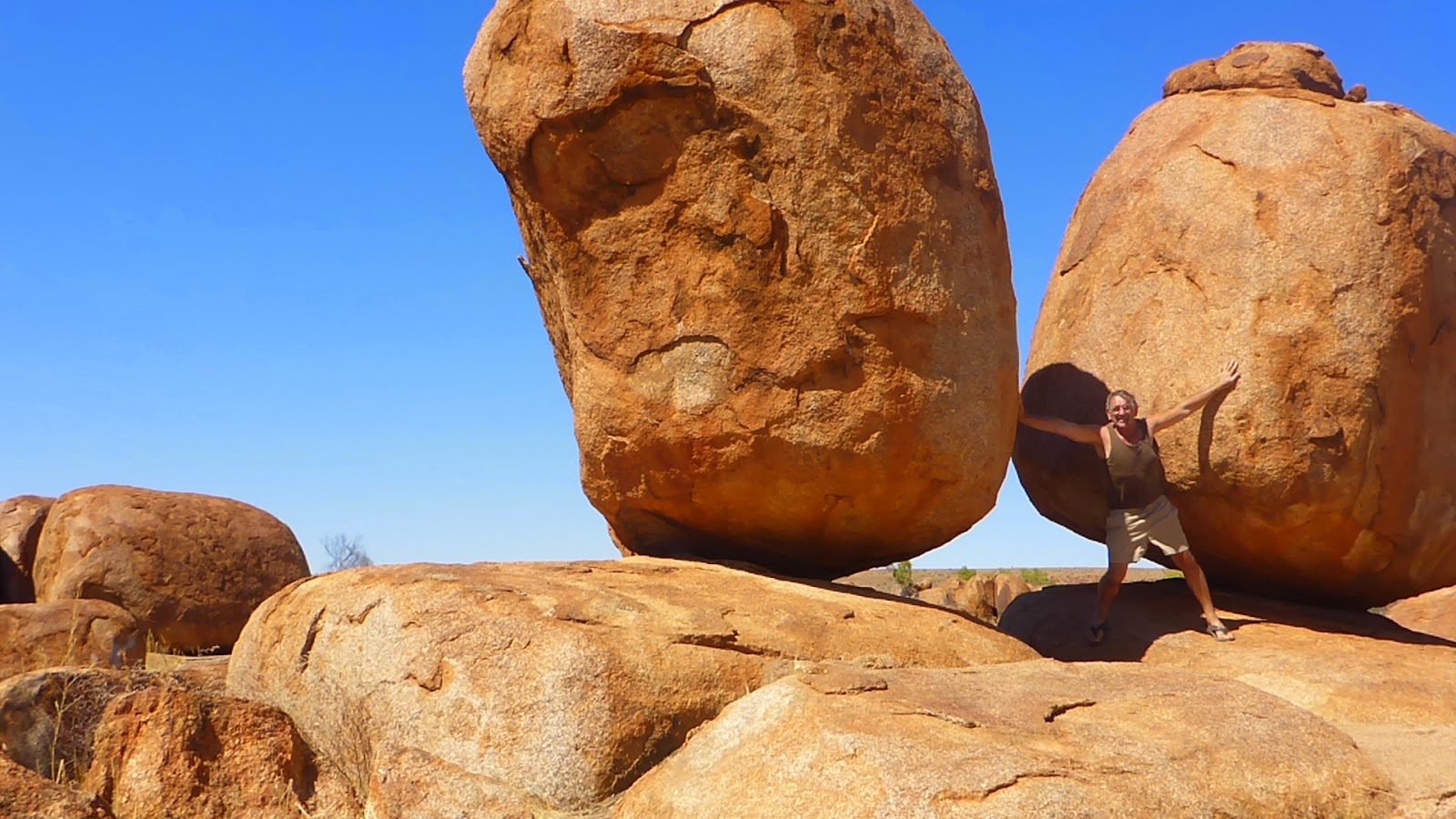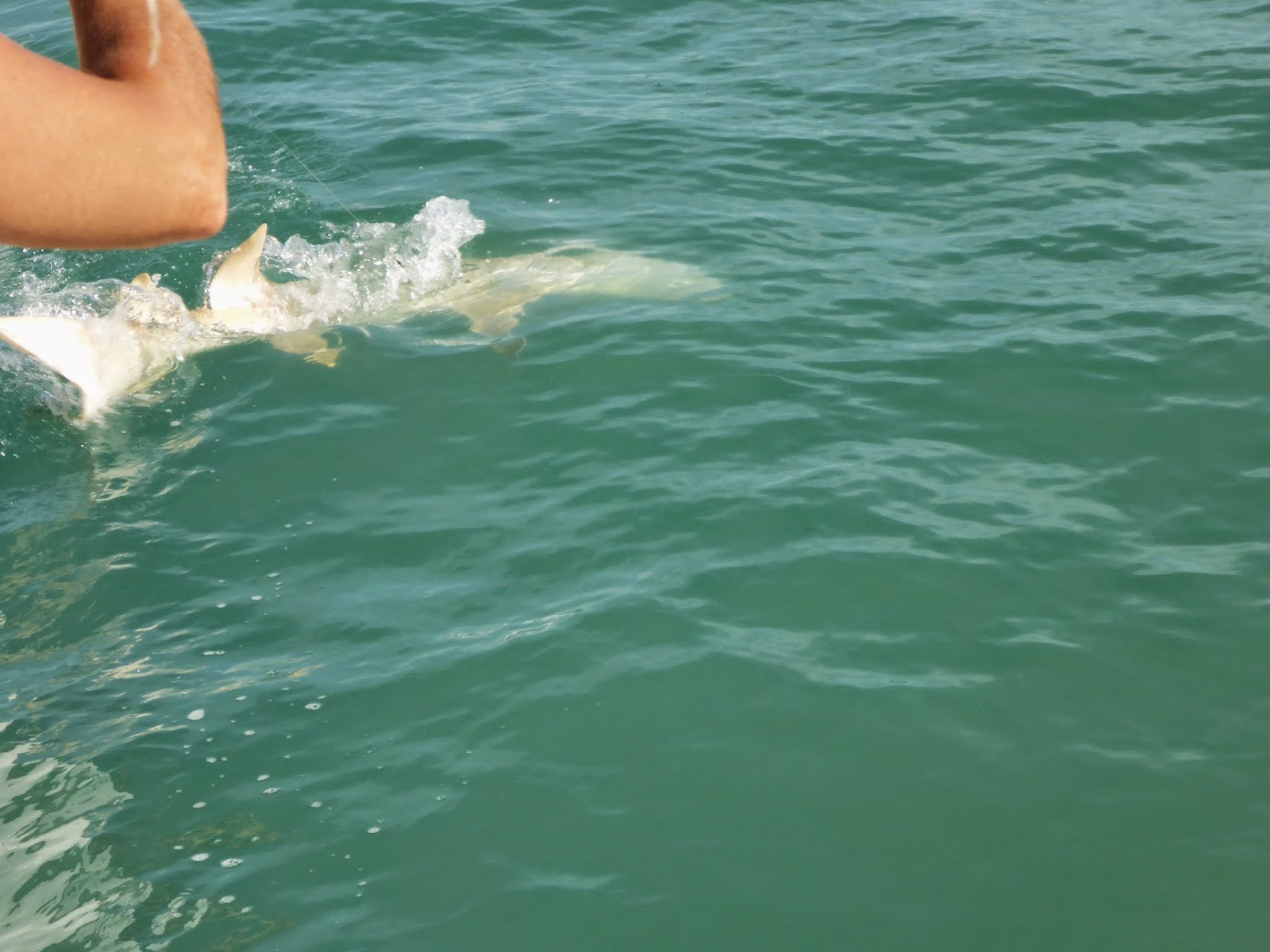Darwin is the capital city of the Northern Territory with a population of around 136,500 living in the greater Darwin area. Driving into the CBD from the outer suburbs is like driving on the Princes Highway between Werribee and Geelong at 2 am, yet we still hear on the news of various efforts that are being made to ease congestion. They don’t even know what congestion is. They have duplicated the Stuart Highway with a parallel road about 2 kilometres apart and both take you to within 2 kilometres of the CBD at 80 KPH at peak hour. Anywhere is only within 10 kilometres of anywhere else and all the connecting roads are either dual or triple carriageway, it’s great. The Royal Darwin Show was on during the week we stayed there and we drove past the show grounds on various occasions and the speed didn't drop below 60 KPH, what a dream run.
The fishing in the territory has been a bit scarce so I decided to take a half day fishing tour to see if my luck would change with some expert tuition. The tour left the ferry terminal at Cullen Bay at 6 am and we sailed for an hour across Beagle Gulf to Charles Point. There were 12 people fishing from the boat and the first 15 minutes only produced a few small fish and one good size blue fin salmon. The skipper moved to another location and the next drop didn't produce anything any better so another shift was on. The skipper said that the tide was flat but he could see fish on the sounder so he anchored and we sat until the tide turned. The fish started biting and I actually caught a rock cod but it turned out to be the smallest fish caught all day. One of the guys on the other side of the boat brought in a beautiful West Australian Dhufish (dhuie) that measured 786 mm long.
We sat on that spot for an hour and 4 other smaller dhuie’s were caught, along with some smaller fish and a lemon shark which they estimated to weigh 200 kilograms and would have been 6 feet long. They decided not to bring it on board after it took the guy 30 minutes to bring it to the surface for a photo.
Just as the skipper called time to leave one of the girls hooked into something big which took her 10 minutes to bring it onto the boat. It turned out to be the biggest dhuie of the day which measured 980 mm long. Her partner wasn't happy as he was like me and hadn't caught anything worth talking about all day.
My day turned out great even though I hadn't caught that “photo fish”, as I had a great time trying, learnt a few things from the professionals, and ended up bringing home the first dhuie caught, as the guy who caught it only wanted the photo and not the fish.
Our oldest daughter Leann had a birthday while we were in Darwin and her husband Clayton bought her a surprise air ticket to Darwin for her to visit us for an extended weekend. Not only was it a surprise for Leann but it was also a great surprise for us, so we put the caravan into storage and moved into a tropical villa at the caravan park for a few days while Leann was here. So what do visitors do when they come to Darwin? Firstly, jump on the “on and off” double decker open top bus for a tour around the city to see the sights.
Cullen Bay is “the “ place to live, it is on a canal system connected to Darwin Harbour by a system of 8 gates in a lock to protect the canals from the big tides and the high waves swept up by the monsoons in the wet season.
Secondly, the biggest attraction in Darwin is the Thursday night Mindil Beach Sunset Market. This market attracts up to 20,000 visitors each week and supports 200 small businesses employing 1,000 people and contributes significantly to the economy of the territory. The market offers stalls with art and craft, fresh fruit and vegies as well as free family entertainment and over 1,200 different food items, so it is a great night out on Thursday night to grab something to eat and go and sit on the beach to eat it while watching the sun go down.
Thirdly was Crocodylus Park Zoo which features many crocodiles over 4.5 metres (14 feet) long, as well as lagoons full of juvenile crocs being bred up for their meat and skins.
The reptile display has 2 very large pythons, one of which weighs over 90 kilograms, so it is a big snake. They also have 2 anaconda’s which the keepers have out in the yard and those who are game enough can have them around their neck, not for me but Leann enjoyed it.
We enjoyed the boat cruise around their man made lagoon and river system where we saw many crocodiles in a more natural environment.
The tour guide pointed out various birds, trees and palms and explained a bit about each as we meandered around the system. He pointed out some pandanus trees and explained the difference between male and female pandanus. Pandanas have long leaves with small spikes that grow on a spiral around the stem, the male leaves spiral to the left where as the female’s spiral to the right. He said that this is easy to remember as the “female is always right”.
They run a guided tour where they feed the crocodiles meat hanging from a stick above them which makes the crocodiles “jump” up to grab the meat. This is normal behaviour for crocs in the wild as they will often jump out of the water to catch birds and bats sitting in low hanging tree branches.
It really highlights the power of these creatures which can get well over half their body length out of the water from a standing start. The park also has a collection of lions, tigers, baboon and various other primates on display in a nice shady area down the back. This park is a private business funded by tourism and the sale of crocodile products and meats, we had a very enjoyable freshly made crocodile burger for lunch from their onsite kiosk.
Who could visit the top end and not swim in one of the many water falls, so a trip down to Wangi Falls in Litchfield National Park rewarded us with a very cooling swim amongst some of the nicest scenery imaginable.
Leann has always been a water baby and we were all water logged after an hour or so floating around the pool with our “noodles”.
Crocodiles are a part of life around these parts so if you see one in the garden, why wouldn't you jump on it’s back just like the “crocodile hunter”.
It was fantastic to have Leann visit us in Darwin and it was a bit sad to put her on the plane and send her back from Darwin’s temperature of 32 degrees to Melbourne temperature of 2 degrees.




























































